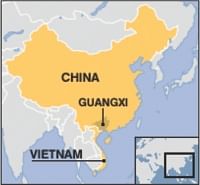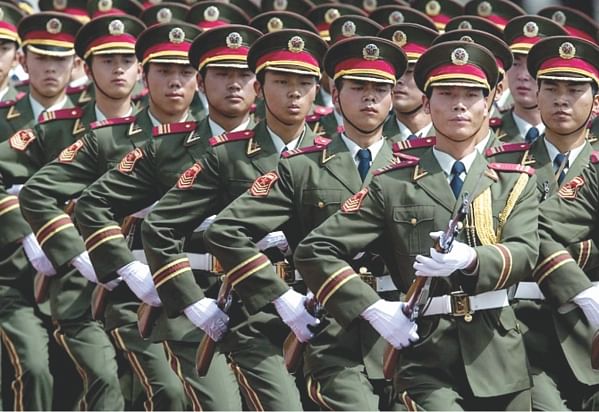| Home - Back Issues - The Team - Contact Us |
 |
| Volume 10 |Issue 34 | September 09, 2011 | |
|
|
International Coping with China's Rapid Rise WILLIAM CHOONG
After all, it is often stressed that China stood by North Vietnam as it fought the United States and South Vietnam during the Vietnam War of the 1960s and 1970s. Since the normalisation of relations in 1991, Vietnam and China have robust mechanisms to manage their relationship, with more than 100 delegations exchanged annually. On Monday, Beijing and Hanoi also pledged to resolve their dispute in the South China Sea through consultations and negotiations. As with most things in international relations, however, there is a strong undertow. To paraphrase Lord Palmerston, countries do not have permanent friends; they only have permanent interests. During the Vietnam War, Beijing and Hanoi's interests converged, hence the firm friendship. Beijing sought to secure its southern flank against American incursion; Hanoi to conquer all of Vietnam. In the past three decades, however, their interests have diverged. In Beijing's eyes, a unified and resurgent Vietnam is a potential threat. In 1974, both countries clashed over the Paracels. Five years later, Beijing attacked Vietnam to "teach Hanoi a lesson" for its invasion of Cambodia. (As Deng Xiaoping put it, it was time to "spank the bottoms of unruly children.") More recently, both countries have traded barbs over the South China Sea. Faced with such a Chinese threat, however, Vietnam has not resorted to hard balancing - a tried and tested option whereby smaller countries align themselves with a strong ally against a bigger neighbour (as the Philippines has done with the United States, vis-a-vis China). Rather, Vietnam's response - engaging multiple partners and enmeshing China in a web of multilateral relationships - has been equally effective. It also serves as a model of how smaller Asian countries can cope with China's rapid rise. Since 1991, Vietnam's diplomacy has been run on steroids. In 1993, it restored ties with the US. Two years later, it joined Asean. Last year, it served as the chair of the 10-nation grouping. The capstone of Hanoi's engagement policy, however, is its revitalised ties with its erstwhile arch foe, the US. Foreign Minister Pham Binh Minh, a US-educated politician whose father had fought the Americans, said recently the two countries were looking at upgrading their relationship to "a new level".
Vietnam has permitted visits by US naval ships and flew its own officials to US carriers out in the South China Sea. Hanoi has also opened up its sprawling Cam Ranh Bay naval base to foreign navies - including the US Navy - a move somewhat similar to Singapore's opening up of Changi Naval Base to other navies. "Vietnam's engagement with Washington will provide ballast in its relations with China. Vietnam can subtly signal to China that assertiveness on Beijing's part will result in an incremental stepping up of relations with the US," says Professor Carl Thayer, a Vietnam scholar at the University of New South Wales. Whether engagement will work, however, is another matter. In a July report, the US Congressional Research Service said there might be a "ceiling" on Viet-US relations, given residual mistrust of the US in Vietnam. This is where the second leg of Vietnam's strategy - enmeshment - steps in. Enmeshment is not new. It was articulated by a senior Vietnam Foreign Ministry official in 1992. Writing in Singapore's The Business Times then, Mr Nguyen Hong Thach said Hanoi should eschew alliances, but Sino-Vietnamese relations should be meshed within the "much larger regional network of interlocking economic and political interests". Anyone wanting to violate Vietnam's sovereignty would be violating the interests of other countries as well, he wrote. Mr Nguyen did not single China out explicitly, but the logic of enmeshment is still powerful. By drawing China into an interconnected web, China will have a growing stake in regional and global forums. Thus, if there is ever a repeat of 1979, Beijing will have to think twice. Indeed, Vietnam as Asean chairman achieved a masterstroke last year, when US Secretary of State Hillary Clinton - reportedly with Vietnamese instigation - stressed at an Asean security forum in Hanoi that the US had an interest in freedom of navigation in the disputed South China Sea, and would help internationalise settlement of the issue. Her declaration roiled the Chinese. But for Vietnam, it was a fait accompli. Writing in China and Vietnam: The Politics Of Symmetry, Professor Brantly Womack argued that China and Vietnam had gone through the "full range of relationships" in their 3,000-year interactions. Through all these interactions, Prof Womack notes one constant: China as the bigger power has rarely been able to dominate Vietnam, the smaller power. This is borne out in history. Mao Zedong introduced the concept of "people's war". But it was Viet general Vo Nguyen Giap, the decorated commander of the People's Army of Vietnam, who used the concept so powerfully as to drive the Americans out of Vietnam. Vietnam celebrated Gen Giap's 100th birthday last week. Pressed by its bigger neighbour, Hanoi should take solace in the fact that the simple, powerful logic of asymmetrical warfare - whereby a smaller country can circumvent the machinations of a bigger foe - is still valid.
Copyright (R) thedailystar.net 2011 |
 W
W